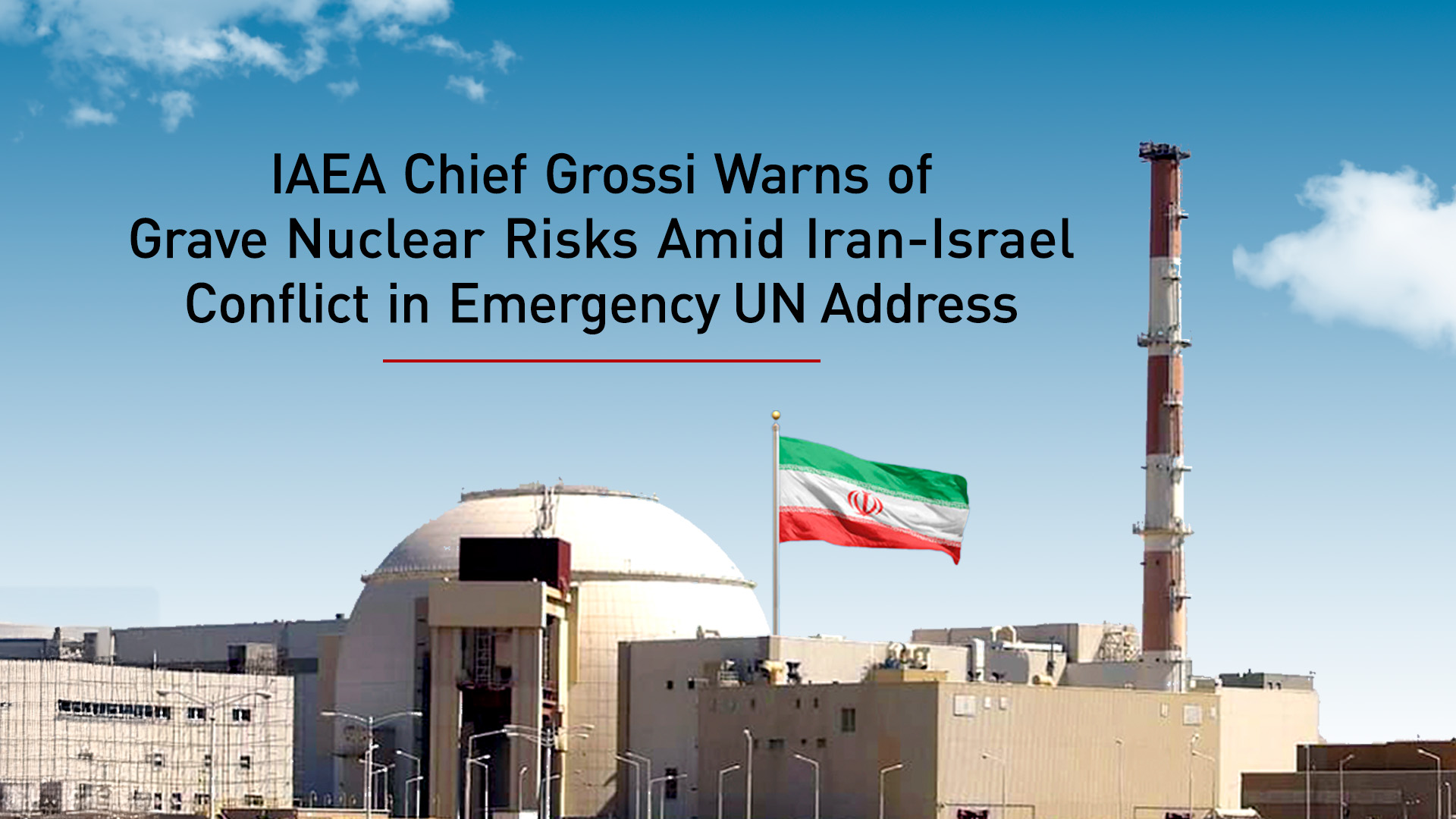IAEA Chief Grossi Warns of Grave Nuclear Risks Amid Iran-Israel Conflict in Emergency UN Address
IAEA chief Grossi warned the UN that Israeli strikes on Iran’s nuclear sites risk a major radiological disaster. While no leaks have occurred yet, key facilities like Natanz and Esfahan were hit. He urged restraint, renewed inspections, and a diplomatic resolution.

By Kamaran Aziz
ERBIL (Kurdistan24) - In an urgent address to the United Nations on Friday, International Atomic Energy Agency (IAEA) Director General Rafael Mariano Grossi outlined the escalating dangers facing Iran's nuclear infrastructure following Israeli military attacks, warning of the grave risks to regional and global nuclear safety.
“Attacks on nuclear sites in the Islamic Republic of Iran have caused sharp degradation in nuclear safety and security in Iran. Though they have not so far led to a radiological release affecting the public, there is a danger this could occur,” Grossi said, addressing an emergency session convened in Geneva.
Grossi noted that the IAEA has been monitoring the situation since the Israeli strikes began, stating: “As part of its mission, the IAEA is the global nerve center for information on nuclear and radiological safety, and we can respond to any nuclear or radiological emergency.”
Natanz Enrichment Site Severely Hit
Grossi provided detailed information about the damage at Iran’s nuclear sites. At the Natanz enrichment facility, which houses two major plants, Israel’s June 13 attack destroyed key components including “an electrical substation, the main electric power supply building, an emergency power supply, and backup generators.” He added that the main cascade hall “appears to have been attacked using ground penetrating munitions.”
Regarding the pilot fuel enrichment plant at Natanz, Grossi reported that “the above ground part was functionally destroyed and the strikes on the underground cascade holes were seriously damaging.”
While no external radiological impact has been detected, Grossi revealed that “within the Natanz facility, there is both radiological and chemical contamination,” raising concerns over dispersal of “uranium isotopes contained in uranium hexafluoride, uranyl fluoride, and hydrogen fluoride.” He warned that inhalation or ingestion of alpha-emitting particles poses serious risks, primarily due to chemical toxicity.
Status of Other Nuclear Sites
Grossi confirmed that Fordow, Iran’s main 60% enrichment site, has not sustained any damage. However, he detailed strikes on the Esfahan site, where four buildings were hit: “The Central Chemical Laboratory, a uranium conversion plant, the Tehran reactor fuel manufacturing plant, and the enriched uranium metal processing facility.” Again, no radiological release has been recorded, but chemical toxicity remains a concern.
The COMDA heavy water reactor under construction in Arak was also hit on June 19. Although the reactor was inactive and contained no nuclear material, “the nearby heavy water production plant is also assessed to have been hit,” Grossi said, adding that no radiological consequences are expected.
Strikes on the Tehran Research Center damaged one building for centrifuge rotor development and two centrifuge component manufacturing workshops, but again, “there was no radiological impact internally or externally.”
Bushehr and the Risk of Catastrophe
Grossi issued a stark warning about Iran’s Bushehr Nuclear Power Plant, which remains operational: “It hosts thousands of kilograms of nuclear material. In case of an attack... a direct hit would result in a very high release of radioactivity to the environment.” Even an indirect hit that disabled power lines could result in core meltdown.
“In their worst case, both scenarios would necessitate protective actions such as evacuations and sheltering of the population or the need to take stable iodine,” Grossi added, warning that radiation monitoring and food restrictions might extend hundreds of kilometers.
He also cautioned that any strike on the Tehran Research Reactor could have “severe consequences potentially for large areas of the city of Tehran and its inhabitants.”
Call for Access and Safety Measures
Grossi emphasized that IAEA inspections must resume immediately once conditions allow, stating: “The safety of our inspectors is of utmost importance. The host country has a responsibility in this regard.”
He reaffirmed that Iran’s stockpiles remain under safeguards, including “more than 400 kilograms... enriched up to 60% of uranium-235.” Any special protection measures must still comply with IAEA oversight, he said.
Appeal for Restraint and Diplomacy
Citing prior IAEA resolutions, Grossi reiterated: “Armed attacks on nuclear facilities should never take place and could result in radioactive releases with great consequences within and beyond boundaries of the state which has been attacked.” He urged “maximum restraint” and noted that military escalation “delays indispensable work towards a diplomatic solution.”
Grossi drew a parallel to the Russia-Ukraine conflict, declaring, “For the second time in three years, we are witnessing a dramatic conflict between two UN and IAEA member states in which nuclear installations are coming under fire.”
He announced readiness to travel and “engage with all relevant parties to help ensure the protection of nuclear facilities,” adding that IAEA nuclear safety and security experts could be deployed alongside safeguards inspectors wherever needed.
Grossi stressed the need for clear, accurate communication, citing a recent erroneous Israeli statement about an attack on Bushehr: “The situation underscored the vital need for clear and accurate communication.”
Concluding Appeal
Grossi concluded: “A diplomatic solution is within reach if the necessary political will is there... They can form the basis of a long-standing agreement that brings peace and avoids a nuclear crisis in The Middle East.”
“This opportunity should not be missed. The alternative would be a protracted conflict and a looming threat of nuclear proliferation... effectively eroding the NPT and the nonproliferation regime as a whole.”
